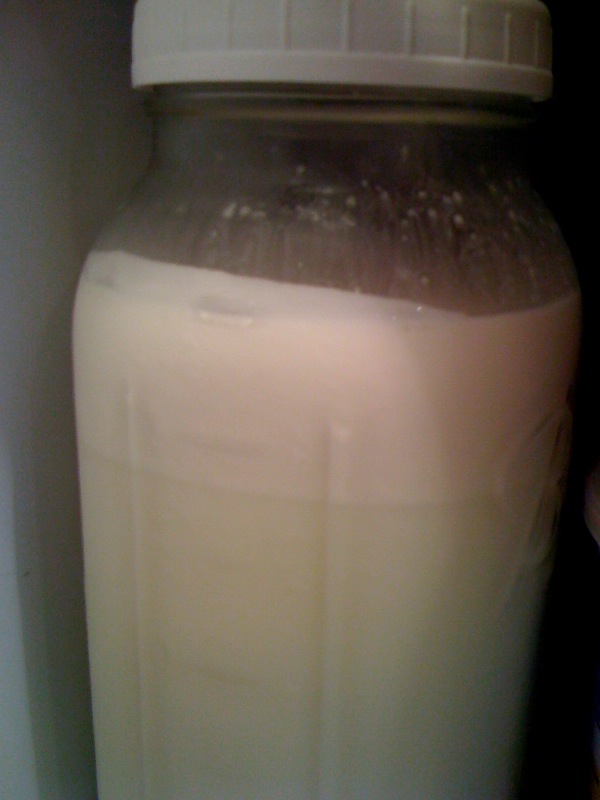Making butter is quite easy but for some reason I’ve always viewed it as wasteful and unpractical. I guess I just assumed making butter requires you to use raw milk in it’s entirety (and raw milk is quite the commodity!). Plus, only a small portion of butter results from the whole gallon of milk and I was under the impression the liquid left over once the butter separates is a waste product.
I’ve never felt inclined to make butter myself. Yet I LOVE me some raw butter and as of late it’s been pretty hard to come by… and it so good for you.
The most healthful raw butter is a springtime commodity in the milking world.
Cows fed on rapidly growing spring grass produce milk that contains high levels of beta carotene and five times the amount of CLA, an essential fatty acid that has a strong anti-cancer properties.
The beta-carotene in grass-fed raw dairy is most evident in butter that is a rich deep yellow color. Grain-fed cows produce a butter that looks white.
Some of you also know that raw butter is a nutritional powerhouse according to Weston A. Price and his work, it is a source of “Factor X”. The “Price Factor X” (now believed to be vitamin K2) is only found in raw grass-fed milk butterfat, fish eggs, and the organs and fats of animals. It is how you can heal cavities with nutrition.
Our raw butter source has always been an Amish farmer, the same one we get our pork from. Our Amish farmer knows to make loads of butter in the spring, in fact, he only makes it in the spring! He then freezes it and sells it off to those interested in it. Sadly, he has been out of butter since the fall. Gasp!
We are swimming in raw milk right now because I’ve started a dairy detox to see if it helps Grayson’s newly developed symptoms and Everly is possibly reacting to dairy also. However, we have a gallon of raw milk coming to us each week via our cow share… so I’m exploring dairy preservation techniques!
We are making greek yogurt with the raw milk but are still swimming in it so I gave butter making a try this week. Butter is made from the cream that sits at the top of your raw, undisturbed milk. Skimming cream is easy and doesn’t require any fancy equipment! Keep your milk in a wide mouthed container and when you see the cream separated at the top (it will separate in the fridge or on the counter if it is undisturbed) just use a ladle and scoop the cream off the top.

Put your skimmed cream in a food processor. You can also try a blender or mixer. I started out trying my experiment in a blender and wasn’t too impressed and I hear the mixer can result in a messy process.



Return the butter solids to your bowl and press the chunks together with a wooden spoon, you’ll notice more liquid coming from the solids, more buttermilk. Pour off the liquid periodically. Keep doing this until your butter is liquid free.
Some folks say you should ice wash the butter next, so it keeps longer. I didn’t do this with mine. I’m not concerned will how long it will keep. We eat raw butter like mad!
Now you can enjoy your fresh raw butter or you can wrap it and freeze it for later use. Pretty easy huh?

About that buttermilk… It’s not at all waste! Sure you can use it in recipes that call for buttermilk but you can also use it for anything that calls for plain ole milk. I tried it with this basic pancake recipe and they didn’t taste any different.
So there you have it, homemade butter making is easy and not really all that wasteful. Plus, it’s a great way to stock up on raw butter while not letting your precious raw milk go to waste.

I too love raw butter, I’ve made it a few times. Thanks for sharing your post on the HomeAcre Hop! Hope to see you again tomorrow! – Nancy The Home Acre Hop